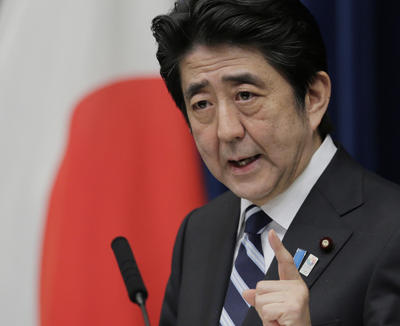He announced a big fiscal expenditure program, despite Japan’s heavy debt burden and uncertainty about whether he would stick by fiscal consolidation: the second arrow. And he signed on to a structural reform program, symbolically by announcing his intention to join the US-centred Trans-Pacific Partnership negotiations.
The three arrows of Abenomics — jointly conceived by Abe’s wily deputy and finance minister, Taro Aso — involves pressuring the BOJ into launching unprecedented aggressive monetary easing and setting a target of 2 per cent inflation by 2015 to support a target of 2 per cent real GDP growth (4 per cent nominal growth); a blowout of the fiscal deficit, financed through a supplementary government budget filled with new public works spending; and a program of reforms to achieve growth through stimulating private investment. As the legend has it, one or two arrows may be broken with a snap, but three together don’t bend and break so easily. Certainly, without the three prongs to Abe’s revival strategy, there are real risks from simply opening the monetary and fiscal floodgates.
The first two ‘arrows’ are crude Keynesianism and are controversial, not least because, if they work, they could bring unintended consequences for the currency and the Japanese government bond market. Abe now says that monetary and fiscal expansion are necessary in the short term at the same time as walking on both sides of the road on fiscal stabilisation. On the one hand, he says he won’t decide on whether to go ahead with the legislated consumption tax increase until October; on the other, he says he’ll meet the goal of halving the government’s primary budget deficit. One voice is for those voting in the July elections. The other is for the economic commentariat (including the Ministry of Finance), deeply worried about the effect of inflationary pressures on the bond market and interest rates.
The ‘third arrow’ of revitalisation is therefore critical for the success of all these measures. If there is no effective reform program for promoting private sector investment-led growth, the chances of a bond market collapse and a fiscal mess multiply dramatically.
However, as Kazuo Ueda, a former member of the BOJ’s policy board, notes in this week’s lead, ‘Japanese asset prices have responded in a surprising way to the announcement of a policy package by Prime Minister Abe and the Bank of Japan (BOJ) — they have gone up. In November last year, before Japan’s election, Abe declared that he would pressure the BOJ into adopting a much more aggressive monetary policy stance than was practiced at the time. If the BOJ did not comply, he hinted, the Bank would lose its independence’. The explanation is the Bank’s willingness to take on an unprecedented risk in the asset market. The Bank has bought heavily and large in assets markets. As Ueda explains, the BOJ may end up owning a large portion of the stock market and yet stock prices could stay depressed. The Bank, and through it the government, would in that event incur a huge capital loss. If the bubble succeeds in stimulating the economy and raising inflation, the BOJ and the government will suffer from significant increases in long-term interest rates. This could generate a sell-Japan type response in the asset market. Without doubt the BOJ is taking huge risks with the measures it has recently announced. This may be a necessary evil after more than a decade of deflation and economic stagnation. Hopefully, the risks will be mitigated by the adoption of effective measures to stimulate the supply side of the economy — the so-called ‘third arrow’ of Abenomics — but that is yet to be seen.
A return to stable, relatively rapid growth, requires a more flexible and competitive Japanese economy. As Harner explains, ‘restrictions, anticompetitive and onerous laws and regulations, multi-tiered, bureaucratic interference and inflexibility, relatively high taxes — all these obstacles to free market exchange and competition have sapped profitability, international competitiveness, and growth from vast swaths of Japan’s economy’.
Without getting rid of these burdens, Japan is not going to be able to grow its way out of stagnation and the risks would then be for deepening of the crisis.
Peter Drysdale is Editor of the East Asia Forum.

